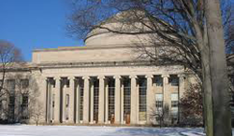
Acceptance by Proxy: Analyzing Perceptions of Hydraulic Fracturing to Better Understand Public Acceptance for Geologic Storage of Carbon Dioxide
Geologic Storage of Carbon Dioxide: Risk Analyses and Implications for Public Acceptance
Public Awareness of Carbon Capture and Storage: A Survey of Attitudes toward Climate Change Mitigation
Sociopolitical Challenges to the Siting of Facilities with Perceived Environmental Risks
The Hawaii Carbon Dioxide Ocean Sequestration Field Experiment: A Case Study in Public Perceptions and Institutional Effectiveness
Building New Power Plants in a CO2 Constrained World: A Case Study from Norway on Gas-Fired Power Plants, Carbon Sequestration, and Politics
Project: Geologic Storage of Carbon Dioxide: Risk Analyses and Implications for Public Acceptance
Research Team: Greg Singleton, Steven Ansolabehere and Howard Herzog
Sponsor: Carbon Sequestration Initiative
Year: 2007
Abstract:
Carbon Capture and Storage (CCS) technology has the potential to enable large reductions in global greenhouse gas emissions, but one of the unanswered questions about CCS is whether it will be accepted by the public. In the past, construction of large facilities such as nuclear power plants has been prevented or delayed by public opposition, and CCS proponents would like to know whether it will provoke similar public opposition. Since the Geologic Storage (GS) component of the CCS architecture has not been widely deployed, this thesis explores the characteristics of GS and how they might affect public perception and acceptance of the larger CCS architecture. To provide insight regarding public acceptance of CCS, this thesis addresses two questions; first asking how GS is likely to be perceived by the public and what can be done to improve that perception, and second asking whether financial compensation can be used to improve public acceptance of energy facilities.
To address the first question about the public perception of GS, this thesis begins with a discussion of risk concepts and how it is used differently by experts, who use a realist perspective, and the general public, who use a social constructivist perspective. After discussing how this difference in perspective leads to risk disputes, this thesis presents an overview of the risk elements of GS. It then reviews existing risk assessments of GS and qualitatively evaluates the risks of GS in terms of their likelihood, impact, and uncertainty. The discussion on risk assessment perspectives and methods is then integrated with the GS risk review to forecast whether GS is likely to be accepted by the public. By using a public perspective to compare GS to existing energy technologies, this thesis concludes that the risks of GS are likely to eventually be considered no worse than existing fossil fuel energy technologies. However, since GS is a new technology with little public awareness, additional demonstrations and field tests will be necessary to make this case to the public.
To address the question of whether financial compensation can be used to improve public acceptance of energy facilities, this thesis presents analyses of data from a public opinion poll on compensation and facility siting. Survey respondents were asked whether they would accept the construction of a natural gas pipeline, nuclear power plant, or coal fired power plant near their home if they were given annual payments of $100. The compensation offers had little net effect on the public’s willingness to accept the facilities, and the survey results do not support the use of compensation to improve public acceptance of energy facilities.
By investigating public risk perception and GS risk assessments, this thesis concludes that 1) full-scale demonstrations of GS will be needed to convince the public that the technology is safe and 2) that financial compensation is ineffective for improving public opinion.
Publications:
Singleton, G., H. Herzog and S. Ansolabehere, "Public Risk Perspectives on the Geologic Storage of Carbon Dioxide," International Journal of Greenhouse Gas Control, Vol 3:1, pp 100-107, January (2009). <LINK> (NOTE: Subscription may be required.)
Singleton, G.R., "Geologic Storage of Carbon Dioxide: Risk Analyses and Implications for Public Acceptance," M.I.T. Masters Thesis, May (2007). <PDF> [Updated 28 Nov 2007]